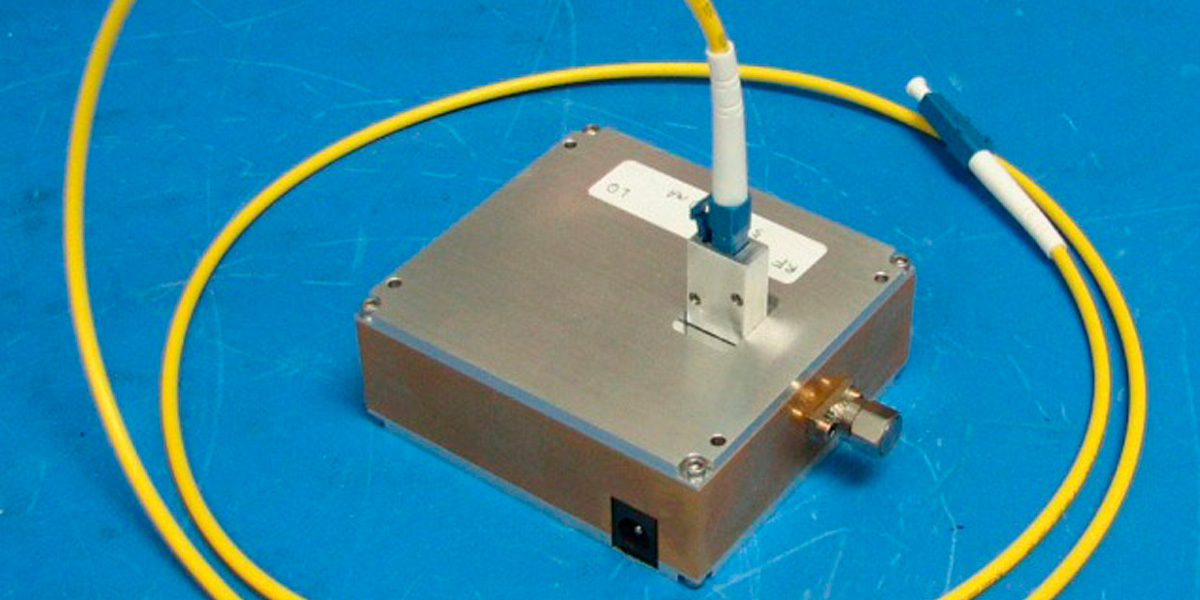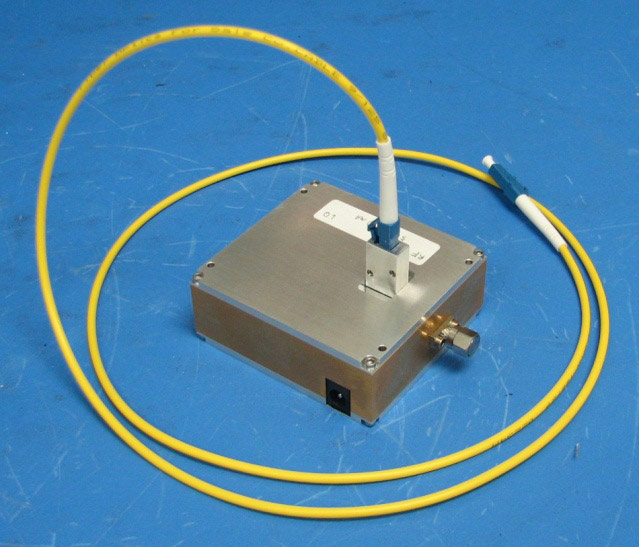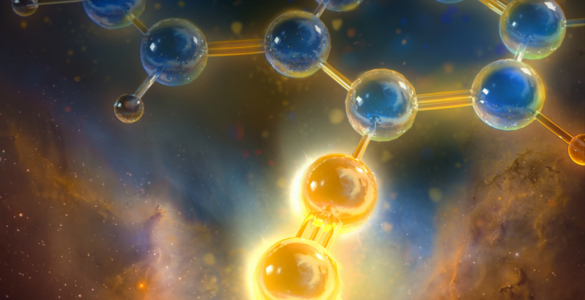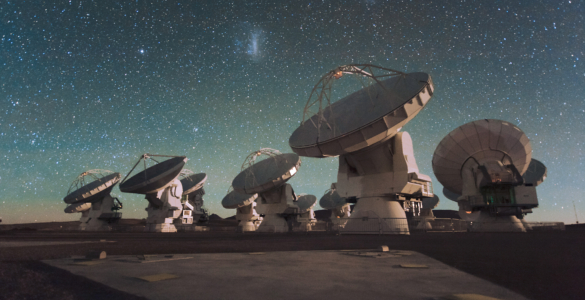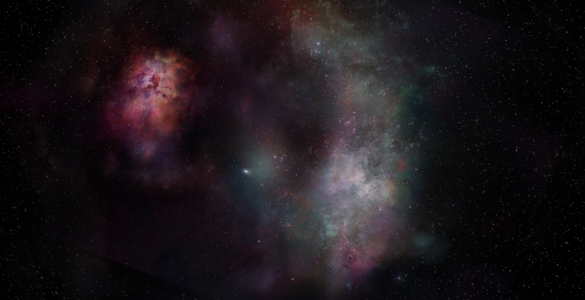Topics in This Issue:
The NRAO’s famed Green Bank Telescope may have detected the faint but telltale signs that modest clumps of galaxies are merging into unimaginably huge galaxy clusters – the largest objects in the known Universe.
A new device created by NRAO engineers may improve the way digital data is transferred over any data link. This innovation was recently awarded a patent by the U.S. Patent and Trademark Office.
Stars and planets form within dense clouds of dust and gas. That much is certain. What is less understood is how small, rocky bodies overcome the chaotic forces in a protoplanetary disk to grow into rocky planets. New radio and millimeter-wavelength observations are piercing the dusty veil surrounding new-born stars and studying the birth of solar systems.
The early Universe was ablaze with starburst galaxies churning out new stars at a ferocious pace. Peering back to this time to see the details of our infant Universe has pushed telescopes to their limits. Excitement is high for new millimeter wavelength telescopes, which are painting a much clearer picture of this epoch and have made a number of startling discoveries.
1. Discovery of Extended Radio Emission from Merging Galaxy Clusters
astronomers using the National Science Foundation’s Green Bank Telescope (GBT) have found the possible telltale signs that groups of galaxies are merging to become galaxy clusters – the largest structures in the known Universe. When the very thin halo of hot hydrogen surrounding a small clutch of galaxies slams into another halo from a completely different galaxy group, astronomers expect to see a unique radio signature.
Most of the normal matter in galaxy clusters is in the form of very hot gas, which can be detected by its faint X-ray emission. Some clusters are also observable by radio emission, which is created when electrons moving at nearly the speed of light encounter magnetic fields. The origin of the super-speedy electrons is uncertain. Some astronomers speculate that they may come from shocks in the hot gas, which then become nature’s own particle accelerators. Measurement of the radio emission can therefore reveal shocked regions, which are likely created when small groups of galaxies known as sub-clusters merge. This could be direct evidence of cluster evolution.
Recently a group of astronomers used the very high sensitivity of the GBT to search for radio emission from 12 clusters. These observations were 10 times more sensitive than have been achieved previously with other telescopes. The researchers discovered extended radio emission from 11 of the 12 clusters. The structure of this radio emission implied that the source of relativistic electrons was distributed throughout the clusters. This suggests two possible origins for the electrons: the shocks caused by new material falling into the clusters or turbulent regions associated with the merging of cluster fragments. Three of the new radio halos they observe come from clusters with substructure visible at other wavelengths, implying that they are in a relatively early stage of merging. http://arxiv.org/abs/1311.3313
Authors: Damon Farnsworth and Lawrence Rudnick, University of Minnesota; Shea Brown, University of Iowa; Gianfranco Brunetti, Istituto Nazionale di Astrofisica, Italy.
2. Radio Astronomy Innovation Promises Big Boost to Data Transmission
Radio astronomy relies on cutting-edge technology to study the invisible universe in radio light. Many of the innovations used in radio astronomy have found new life in medical imaging, wireless communications, and other technologies. A new device developed at the National Radio Astronomy Observatory’s (NRAO) in Charlottesville, Va., is able to improve the way data is transmitted from massive radio telescopes to the computers where it is analyzed by researchers. This new device, known as an Integrated Receiver, may also improve the way digital data is transferred over any data link.
Normally, the data collected by a radio telescope would have to be formatted and bundled as “packets.” The new device developed by NRAO engineers Matt Morgan and Rick Fisher eliminates this step entirely, which greatly reduces power consumption, complexity, and self-interference at the data sampling end of the data link. These improvements make it possible to build larger and more efficient receivers on telescopes while still maintaining the stability of the signal. That stability keeps the system calibrated, or fine-tuned, longer – which is important for high dynamic range imaging and critical for future planned radio astronomy facilities. Laboratory experiments prove that this data link is very robust in real-world applications. The engineers believe that similar hardware could also be used in other scientific and medical imaging applications where the data transmission rates are very high. It could also work with radar and sonar systems as well as security screening platforms. This new device was awarded a patent by the United States Patent and Trademark Office, Application No. 13/186,739.
3. From Dust and Gas to Disks and Planets (2014 AAAS Meeting Symposium)
Planets and stars form in dusky cocoons of dust and gas, often buried deep inside even larger obscuring clouds of molecular gas. These obscuring environments have made optical studies of solar system formation challenging at best. Radio telescopes, however, can see through the intervening dust and gas to probe deep into regions that have been largely inaccessible before. This symposium explores how a new generation of enormously more capable radio-wavelength research tools – such as the Atacama Large Millimeter/submillimeter Array (ALMA) in Chile and the Karl G. Jansky Very Large Array (VLA) in New Mexico – are revolutionizing our ability to observe, analyze, and understand protoplanetary disks and planet formation, opening new scientific frontiers. AAAS 2014 Annual Meeting: Friday, 14 February 2014; 8:30 a.m. – 11:30 a.m., Session 7033: http://aaas.confex.com/aaas/2014/webprogram/Session7033.html
Speakers: John Tobin Jr., National Radio Astronomy Observatory; Jonathan Williams, University of Hawaii; Laura Perez, National Radio Astronomy Observatory; Edwin A. Bergin, University of Michigan; David J. Wilner, Harvard-Smithsonian Center for Astrophysics; Arielle Moullet, National Radio Astronomy Observatory.
4. Galaxy Evolution in the Early Universe (2014 AAAS Meeting Symposium)
Galaxies, the fundamental building blocks of the Universe, remain a mystery. Scientists are still searching for clues to how they formed and evolved through cosmic time. Our best understanding is that galaxies evolved in fits and spurts through mergers, intensive star formation, and supermassive black hole activity. Looking back to when the Universe was just a billion years old, starburst galaxies converted vast reservoirs of gas into new stars at a furious pace – many thousands of times faster than normal spiral galaxies like our Milky Way. Enormous progress is being made in our understanding of galaxies thanks to new, state-of-the-art centimeter- and millimeter-wavelength telescopes such as the Atacama Large Millimeter/submillimeter Array in Chile, the South Pole Telescope in Antarctica, the Combined Array for Research in Millimeter-wave Astronomy in California, and the Karl G. Jansky Very Large Array in New Mexico. AAAS 2014 Annual Meeting: Saturday, 15 February 2014; 10 a.m. – 11:30 a.m., Session 7105: http://aaas.confex.com/aaas/2014/webprogram/Session7105.html
Speakers: Dominik Riechers, Cornell University; Joaquin D. Vieira, University of Illinois; Alexandra Pope, University of Massachusetts.
– – – – – – – – – –
The National Radio Astronomy Observatory is a facility of the National Science Foundation, operated under cooperative agreement by Associated Universities, Inc.







